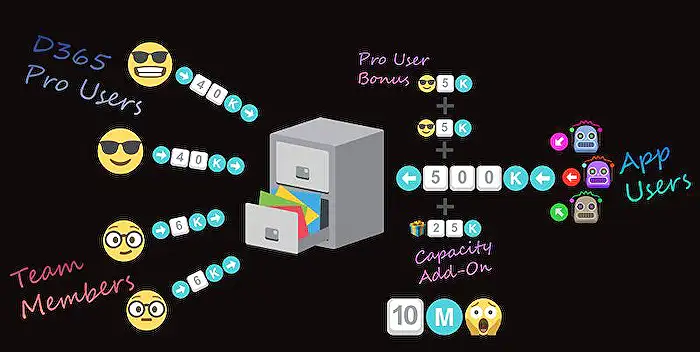- All of Microsoft
Microsoft Sovereign Cloud: 3 Game-Changing Updates You Can’t Miss
Microsoft Sovereign Cloud Microsoft 365 Azure Active Directory Microsoft Purview Security Copilot Microsoft Entra
Key insights
- Microsoft Sovereign Cloud is evolving in 2025 to better support public sector and regulated industries by increasing compliance, security, and data sovereignty.
- The improved Sovereign Landing Zone (SLZ) offers more configuration options and is now closely aligned with the Azure Landing Zone. It supports broader infrastructure setups while ensuring strict compliance.
- Terraform support for SLZ has reached general availability (GA), allowing organizations to automate cloud infrastructure management in regulated environments using Terraform tools.
- Microsoft introduces three new Sovereign Cloud deployment tiers: Public Cloud (regional data residency with local control), Private Cloud (for isolated, sensitive workloads with physical control), and National Partner Clouds (customized for specific country needs).
- Expanded policy initiatives bring updated baseline policies, country-specific compliance sets, and deeper integration with Azure’s policy engine to help customers meet regulatory requirements more easily.
- The core goal of Microsoft Cloud for Sovereignty is to let regulated users build secure workloads on Azure while maintaining full control over data privacy, residency, and compliance through built-in automation and security features.
Introduction: Microsoft Sovereign Cloud Unveils Major Updates
Microsoft has announced significant changes to its Sovereign Cloud offerings in 2025, targeting public sector organizations and regulated industries that prioritize compliance, robust security, and data sovereignty. In a recent YouTube video, Peter Rising [MVP] breaks down these updates, explaining how the new cloud tiers and enhanced features are designed to address the evolving needs of organizations across Europe and beyond. As the demand for trustworthy cloud solutions grows, Microsoft’s latest innovations promise to offer more flexibility, configurability, and control.
This article explores the three main changes coming to Microsoft Sovereign Cloud, drawing insights from Peter Rising’s coverage. We’ll look at the enhanced Sovereign Landing Zone, the introduction of new deployment tiers, and expanded policy initiatives, while also considering the tradeoffs and challenges these changes may bring.
Enhanced Sovereign Landing Zone: More Configurability and Terraform Support
One of the most notable updates is the improvement of the Sovereign Landing Zone (SLZ). Microsoft has aligned the SLZ more closely with the Azure Landing Zone, providing customers with broader configuration options and tighter integration with Azure’s built-in policies. This move allows organizations to tailor their cloud environments to meet diverse regulatory requirements while maintaining strong compliance and sovereignty controls.
A particularly impactful milestone is the general availability of SLZ on Terraform. Previously in public preview, this advancement enables organizations to automate their infrastructure deployment using infrastructure-as-code principles. While this enhances efficiency and repeatability, it also introduces new complexities in managing highly regulated environments. Balancing automation with stringent oversight will be vital for organizations aiming to leverage these new capabilities securely.
New Deployment Tiers: Flexibility for Regional and Regulatory Needs
Microsoft is introducing a new, tiered approach to Sovereign Cloud deployments in Europe, offering three distinct options: Sovereign Public Cloud, Sovereign Private Cloud, and National Partner Clouds. Each tier is designed to cater to different levels of data residency, control, and compliance, allowing organizations to select the model that best fits their operational and legal requirements.
The Sovereign Public Cloud ensures data remains within European borders, managed under local laws and by personnel with access and encryption key control. This option supports all core Microsoft services without requiring customer migration, making it an accessible choice for many. In contrast, the Sovereign Private Cloud targets highly sensitive workloads, integrating with Azure Local and Microsoft 365 Local for hybrid or air-gapped scenarios where customers retain physical control. Finally, National Partner Clouds deliver customized solutions operated by local partners, addressing country-specific compliance needs. While these options offer greater flexibility, organizations must carefully evaluate which tier aligns with their unique risk profiles and compliance demands.
Expanded Policy Initiatives: Simplifying Compliance and Governance
To further support regulated sectors, Microsoft is expanding its portfolio of policy initiatives within Sovereign Cloud environments. New and updated policy frameworks, including the Sovereignty Baseline Policy and country-specific regulations, will be available for customers to apply as needed. These initiatives are tightly integrated with Azure’s policy engine, ensuring that sovereignty, privacy, and security requirements are enforced seamlessly.
For organizations, this development means a streamlined path to compliance. However, the challenge remains in navigating the complexities of overlapping regulations and customizing policies to fit specific operational contexts. The increased range of policy options provides more control but also demands a deeper understanding of both regulatory landscapes and Microsoft’s policy management tools.
Balancing Innovation and Compliance: Tradeoffs and Challenges
While Microsoft’s enhancements to Sovereign Cloud offer clear benefits—such as improved configurability, greater deployment flexibility, and robust compliance support—they also introduce new challenges. Organizations must balance the desire for automation and scalability with the need for strict governance. Adopting infrastructure-as-code and choosing between deployment tiers requires careful planning to avoid unintended compliance risks.
Moreover, the move toward more granular policy initiatives means that IT teams must remain vigilant, continuously updating their knowledge to keep pace with changing regulations and Microsoft’s evolving toolsets. In this dynamic landscape, the ability to adapt quickly becomes as important as technical expertise.
Conclusion: A Forward-Looking Cloud for Regulated Industries
Microsoft’s latest updates to its Sovereign Cloud platform underscore its commitment to serving customers in highly regulated sectors. By enhancing the Sovereign Landing Zone, introducing new deployment tiers, and expanding policy frameworks, Microsoft aims to empower organizations with greater choice and control. As Peter Rising [MVP] emphasizes in his video, understanding these changes will be crucial for organizations seeking to leverage the full potential of Microsoft’s cloud technologies while maintaining compliance and security.
Ultimately, these updates mark a significant step forward in the evolution of cloud services for public sector and regulated industries, offering both opportunities and new responsibilities for IT leaders and compliance teams alike.

Keywords
Microsoft Sovereign Cloud updates Microsoft cloud security sovereign cloud features enterprise cloud compliance data residency in Microsoft cloud government cloud solutions
